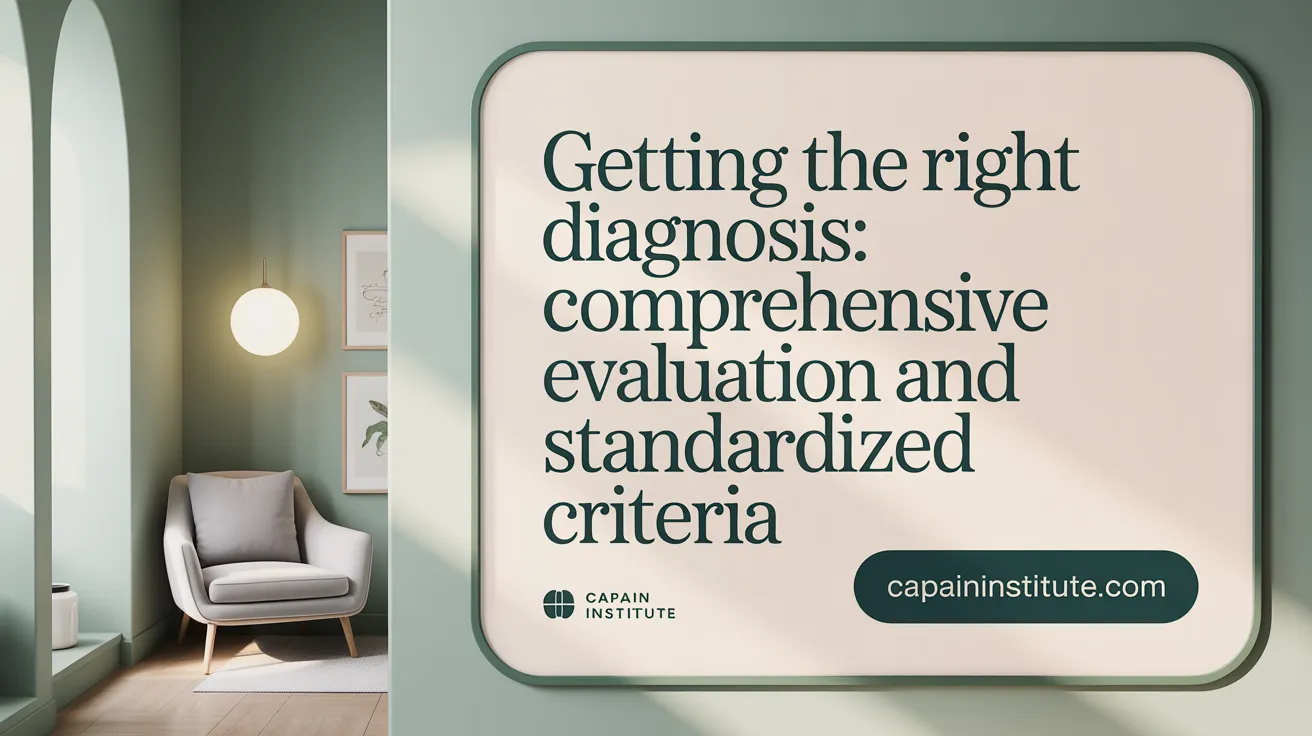Understanding Chronic Headache and Migraine Challenges
Chronic headaches and migraines affect millions, posing substantial challenges to everyday life. Their complex causes, variable symptoms, and evolving treatment landscape demand a nuanced approach. This article outlines what works in managing these conditions, from diagnosis to new therapies, lifestyle adjustments, and evidence-based strategies.
<!-- VIDEO:eyJsaW5rIjoiaHR0cHM6Ly93d3cueW91dHViZS5jb20vd2F0Y2g/dj1VRmVDY0VZTGhsbyIsImltYWdlVXJsIjoiaHR0cHM6Ly9lbmNyeXB0ZWQtdnRibjAuZ3N0YXRpYy5jb20vdmlkZW8/cT10Ym46QU5kOUdjU01BTzJGb0U1ZWYxcVJ3SlRmaEVUVFFjTTAzckprQTU4a2VBIiwidGl0bGUiOiJNaWdyYWluZSDigJQgVHJlYXRtZW50IGFuZCBQcmV2ZW50aXZlIFRoZXJhcGllcyB8IE5FSk0iLCJzbmlwcGV0IjoiSW4gdGhpcyBpbnN0cnVjdGlvbmFsIHZpZGVvLCBEcnMuIEN5bnRoaWEgQXJtYW5kIGFuZCBFbGl6YWJldGggTG9kZXIgZGlzY3VzcyB0aGUgY2xpbmljYWwgcHJlc2VudGF0aW9uIGFuZCBwYXRob3BoeXNpb2xvZ3kgb2YgbWlncmFpbmUgYW5kwqAuLi4ifQ== -->Common Causes and Triggers of Chronic Headaches and Migraines

What are the common causes and triggers of chronic headaches and migraines?
Chronic headaches and migraines arise from a multifaceted interplay of genetic, environmental, and lifestyle influences. Although precise causes remain somewhat elusive, certain factors have been consistently linked to the development and exacerbation of these conditions.
Genetic predisposition plays a role, with many sufferers having family members who also experience migraines. Environmental factors such as weather changes, bright lights, loud noises, and strong odors frequently serve as triggers. Lifestyle habits—including irregular sleep patterns, dehydration, stress, and dietary choices—can also set off attacks.
Hormonal fluctuations, particularly in women, significantly influence migraine occurrence. Changes in estrogen levels during menstruation, pregnancy, or menopause often correlate with increased frequency or intensity.
Mechanistic explanations involve imbalances in brain chemicals like serotonin and CGRP, which modulate pain and vascular functions. Abnormal activity within the brainstem, alterations in blood flow, and mitochondrial dysfunction are also implicated in migraine pathophysiology.
Additionally, overuse of pain medications, caffeine, or other substances can lead to medication overuse headaches, further complicating the clinical picture.
In essence, triggers such as stress, hormonal shifts, sleep irregularities, certain foods, dehydration, sensory overload, and medication excess contribute to the onset and persistence of chronic headaches and migraines. Recognizing these factors allows for targeted strategies to reduce attack frequency and severity.
Diagnosis and Assessment of Migraine and Headache Conditions

How are migraine and headache conditions diagnosed and assessed?
Diagnosing migraine and other headache disorders involves a detailed clinical process. Healthcare providers start by taking a thorough medical history, focusing on the characteristics of the headaches, such as how they start, how long they last, their location and severity, and any symptoms that accompany the pain, like nausea or sensitivity to light and sound.
They ask about possible triggers such as stress, hormonal changes, specific foods, or environmental factors. A physical and neurological exam is also essential to check for any signs of neurological issues or underlying health problems.
To ensure an accurate diagnosis, clinicians often use standardized criteria, including the International Classification of Headache Disorders (ICHD-3). These criteria help differentiate primary headaches like migraine from other types and secondary causes that may require different treatments.
Imaging tests like MRI or CT scans are frequently employed, especially in complex cases or when symptoms are unusual, abrupt, or involve neurological deficits. These tests help rule out other conditions such as tumors, infections, or vascular issues that can mimic migraine.
Laboratory tests may also be necessary to exclude systemic or infectious causes, depending on the patient's overall health and symptom presentation.
Importantly, the process emphasizes differential diagnosis — distinguishing between primary pain disorders and secondary or more serious causes. Accurate assessment ensures appropriate treatment plans, reducing the risk of misdiagnosis and improving patient outcomes.
| Diagnostic Component | Purpose | Additional Details |
|---|---|---|
| Medical history interview | Understanding symptom pattern | Duration, intensity, triggers, and associated symptoms |
| Physical and neurological exam | Detecting neurological signs | Checking reflexes, strength, coordination |
| Standardized criteria (ICHD-3) | Applying clinical criteria for diagnosis | Ensures consistency and accuracy |
| Imaging tests (MRI/CT) | Ruling out secondary causes | Especially in atypical or sudden-onset cases |
| Laboratory tests | Excluding systemic causes | Blood tests, infectious disease panels |
This comprehensive approach allows clinicians to confidently diagnose migraine and other headache disorders, setting the stage for effective management strategies.
Pharmacologic Treatment Options for Migraines and Chronic Headaches

What are the effective treatment options, including pharmacologic and nonpharmacologic therapies, for migraines and headaches?
Managing migraines and chronic headaches requires a combination of medication and lifestyle strategies tailored to each individual. Pharmacologic options include both acute relief medications and preventive treatments.
For immediate relief during a headache attack, nonsteroidal anti-inflammatory drugs (NSAIDs) like naproxen and ibuprofen are common. Triptans, such as sumatriptan, are specifically designed to halt migraine symptoms quickly. Anti-nausea medicines can help with accompanying nausea and vomiting.
Prevention focuses on reducing the frequency and severity of attacks. Preventive drugs include beta blockers such as propranolol and atenolol, which have been shown to prevent migraines effectively. Antidepressants like amitriptyline, a tricyclic antidepressant, are also frequently used, especially for tension types or migraines with comorbid depression.
Antiseizure medications, including topiramate and valproic acid, are proven to lower attack frequency. Botox injections have been approved for chronic migraines and involve treatments every three months.
Recent advancements have added newer oral options, like gepants (ubrogepant, rimegepant), which are used for both acute and preventive measures, and ditans (lasmiditan), targeting serotonin receptors to abort migraines.
Another novel class involves monoclonal antibodies targeting calcitonin gene-related peptide (CGRP), such as erenumab or fremanezumab. These have significantly reduced attack days in clinical trials and are especially useful for those with chronic migraine.
Lifestyle modifications are crucial adjuncts. Regular sleep, diet management, hydration, and avoiding triggers such as stress, certain foods, and hormonal changes can decrease headache frequency.
Behavioral therapies, including cognitive behavioral therapy, biofeedback, relaxation techniques, acupuncture, and physical therapy, support medication use and help manage stress and other triggers.
In complex cases, neuromodulation devices and nerve blocks may be recommended.
It’s vital to work with healthcare professionals to tailor treatments, considering factors like medication overuse, risk of rebound headaches, and comorbid conditions. A combined approach often provides the best long-term control over migraines and chronic headaches.
Nonpharmacologic Therapies and Complementary Approaches

What are the effective treatment options, including pharmacologic and nonpharmacologic therapies, for migraines and headaches?
Managing migraines involves a combination of medication and lifestyle strategies. Pharmacologic treatments include relief medications such as NSAIDs (like ibuprofen and naproxen) and triptans to stop symptoms during an attack. For long-term prevention, doctors often recommend preventive drugs, such as beta blockers (atenolol, metoprolol), antidepressants (tricyclics like amitriptyline), anticonvulsants (topiramate, divalproex sodium), Botox injections, and newer options like CGRP monoclonal antibodies.
Alongside medications, non-drug therapies play a crucial role. These include lifestyle changes like maintaining regular sleep patterns, balanced diet, hydration, and avoiding known triggers such as stress or certain foods. Behavioral therapies—including cognitive behavioral therapy (CBT)—help reduce headache severity and frequency. Relaxation techniques, biofeedback, and acupuncture are also effective in managing stress and reducing migraine episodes.
Additional approaches like physical therapy, massage, and neuromodulation devices can help decrease muscle tension and nerve sensitivity associated with migraines. Some patients find relief using herbal remedies and supplements such as magnesium, vitamin B2, coenzyme Q10, and feverfew, which may help lower attack frequency.
Combining pharmacologic treatments with these complementary methods offers the best chance for effective migraine management. It is essential to work with healthcare professionals to develop a personalized plan that addresses individual symptoms and triggers, aiming to improve quality of life and reduce migraine burden.
More information
Searching for "complementary therapies for migraines and chronic headaches" can uncover additional options, including emerging therapies and lifestyle modifications tailored to individual needs.
Lifestyle Modifications and Self-Care Strategies to Reduce Headache Frequency and Severity

What lifestyle modifications and self-care strategies can help reduce the frequency and severity of headaches?
Implementing lifestyle changes and self-care routines can have a powerful impact on reducing headache and migraine symptoms. Consistency is crucial; establishing a regular sleep pattern helps prevent attack triggers. Good sleep hygiene—such as maintaining a consistent bedtime, avoiding screens before sleep, and ensuring a comfortable sleep environment—can lower headache frequency. If sleep disorders like insomnia or sleep apnea are present, seeking appropriate treatment is essential.
Managing stress effectively is another vital strategy. Techniques such as mindfulness meditation, deep breathing exercises, yoga, and progressive muscle relaxation can help relax tense muscles and calm the nervous system. Regular physical activity like walking, cycling, or swimming releases endorphins, natural painkillers that contribute to pain relief and stress reduction.
Diet also plays a role. Keeping hydrated by drinking plenty of water prevents dehydration, a common headache trigger. Eating balanced meals at regular intervals avoids hunger-induced headaches and maintained blood sugar levels. Avoiding known dietary triggers, such as processed foods, alcohol, caffeine, chocolate, aged cheeses, and certain additives, can significantly decrease attack frequency.
Environmental factors like bright lights, strong smells, loud noises, and weather changes can provoke headaches. Using sunglasses, wearing earplugs, and controlling indoor lighting are simple measures to reduce exposure.
Maintaining a headache or migraine diary helps identify personal triggers and patterns. Recording symptoms, food intake, sleep, stress levels, and medication use provides valuable insights, enabling tailored self-management.
These lifestyle adjustments, combined with medical guidance, form a foundation for effective headache control, improving quality of life and reducing reliance on medication.
Pain Relief Methods and Attack Prevention Techniques for Chronic Migraines
What pain relief methods and attack prevention techniques are recommended for migraines and chronic headaches?
Managing migraines involves both immediate relief during attacks and long-term prevention. During a migraine episode, resting in a dark, quiet room often helps reduce sensory overload. Applying heat or cold packs to the head or neck can soothe symptoms, while sipping small amounts of caffeine—like a cup of coffee or tea—may provide quick relief if used sparingly.
For attack prevention, lifestyle changes are fundamental. Maintaining a regular sleep schedule and eating balanced meals helps stabilize body functions that might trigger migraines. Stress is a common trigger, so techniques such as biofeedback, meditation, yoga, and relaxation exercises are recommended to manage stress levels.
Engaging in regular, moderate physical activity, like walking or swimming for at least 30 minutes most days, can release endorphins that block pain signals and improve overall well-being. Limiting caffeine intake to no more than 400 mg daily and avoiding known dietary triggers—such as processed foods, alcohol, or aged cheeses—are also vital steps.
Research supports the use of dietary supplements such as magnesium, riboflavin (vitamin B2), and coenzyme Q10, which may reduce the frequency and severity of migraines. Acupuncture and green light therapy have shown promise as non-pharmacologic preventive options.
Pharmacological treatments include over-the-counter NSAIDs and triptans for acute attacks. When migraines are frequent or debilitating, preventative medications like anti-CGRP monoclonal antibodies, Botox injections for chronic migraine, and certain antidepressants or anti-seizure drugs are often prescribed.
Ultimately, combining medication with behavioral and lifestyle interventions offers the most comprehensive approach. This integrated strategy helps to both ease immediate pain and lower the likelihood of future attacks, improving quality of life for many migraine sufferers.
Current Guidelines and Evidence-Based Approaches to Migraine Management
What are the current guidelines and evidence-based approaches for managing migraines and chronic headaches?
Managing migraines and chronic headaches requires a comprehensive, evidence-based approach. The American Headache Society (AHS) provides detailed guidelines that highlight the importance of individualized treatment plans based on the severity and frequency of attacks.
Treatment strategies are divided into acute and preventive therapies. Acute treatments aim to quickly relieve headache pain during an attack and typically include nonsteroidal anti-inflammatory drugs (NSAIDs) like ibuprofen and naproxen, and triptan medications such as sumatriptan. These help limit the severity and duration of attacks.
Preventive therapies focus on reducing the frequency and severity of migraines over time. These include medications like antihypertensives such as beta blockers (atenolol, propranolol), anticonvulsants like topiramate and valproic acid, and newer options like CGRP monoclonal antibodies—erenumab, fremanezumab, and galcanezumab—approved specifically for migraine prevention.
The guidelines also recommend nonpharmacologic therapies, which can significantly complement medication plans. Regular aerobic exercise, behavioral strategies like cognitive behavioral therapy, biofeedback, and mindfulness have shown to decrease attack frequency and improve quality of life.
Special populations and complex cases, such as medication overuse headache or secondary headaches, require tailored management strategies. For example, medication overuse can be addressed through medication withdrawal and patient education.
Throughout their recommendations, the AHS emphasizes the importance of patient education, lifestyle modifications, and the use of migraine diaries to identify triggers. Combining these approaches with medications, when appropriate, offers the best chance of reducing the burden of migraines and improving patients’ daily functioning.
In summary, current guidelines subscribe to a multimodal approach, integrating evidence-based pharmacological and nonpharmacological treatments to tailor care for each individual based on the latest high-quality research.
Managing Medication Overuse and Complex Chronic Headache Cases
What are the risks associated with medication overuse headache (MOH)?
Medication overuse headache (MOH) occurs when frequent use of headache medications—more than 10 to 15 days a month—leads to an increase in headache frequency and severity. Overuse of acute pain medications like NSAIDs, triptans, or opioids can paradoxically worsen headaches, creating a cycle that is difficult to break.
This condition can significantly impair quality of life, making control of migraines more challenging. Patients may experience daily or near-daily headaches that become refractory to usual treatments.
What is opioid-induced hyperalgesia (OIH) and its implications?
OIH is a state where long-term opioid use results in increased sensitivity to pain. Instead of relieving pain, opioids can enhance pain perception due to neuroplastic changes, including NMDA receptor activation. It can lead to a paradoxical situation where increasing opioid doses do not alleviate pain and may worsen it.
OIH complicates migraine management, especially in those with medication overuse, and increases the risk of chronic pain states.
Strategies for managing MOH and OIH
Managing these complex cases involves multiple approaches. First, gradual withdrawal of overused medications—preferably under medical supervision—is crucial. This often entails replacing overused drugs with non-pharmacological methods and, if necessary, using bridging therapies like corticosteroids or anti-nausea medications.
In cases of OIH, tapering opioids is essential. Alternative treatments include preventive medications such as Botox, CGRP monoclonal antibodies, and nonpharmacologic therapies.
Patient education about the risks of medication overuse and adherence to tailored treatment plans is vital to prevent recurrence.
What role do mental health and comorbidities play?
Addressing mental health issues like depression and anxiety is fundamental, as these conditions often coexist with chronic headaches and can worsen outcomes. Stress and psychological factors influence headache frequency and severity.
Supportive therapies, including cognitive-behavioral therapy (CBT), can reduce the impact of stress and improve coping strategies. Managing comorbidities also reduces the risk of medication overuse and enhances treatment success.
How are treatment adjustments and monitoring personalized?
Effective management requires individualization. Regular monitoring of headache patterns, medication use, and response to treatments helps adjust plans as needed.
Using headache diaries and routine assessments ensures early detection of medication overuse or OIH recurrence. Tailoring medications based on patient response, comorbidities, and risk factors enhances efficacy and safety.
Overall, current evidence-based guidelines emphasize a multidisciplinary approach combining medication management, behavioral therapy, and lifestyle modifications to control complex chronic headaches and prevent overuse complications.
New Advances and Emerging Treatments in Migraine Care
What are the new advances and recent research findings in migraine and headache treatment?
Recent progress in migraine management has revolutionized how healthcare providers approach this complex disorder. Among the most significant developments are the introduction of CGRP monoclonal antibodies. Medications such as erenumab (Aimovig), fremanezumab (Ajovy), and galcanezumab (Emgality) have proven highly effective in reducing attack frequency in chronic and episodic migraine sufferers. These injectable therapies target the calcitonin gene-related peptide (CGRP), a neuropeptide involved in migraine pathophysiology, offering a preventive approach that minimizes reliance on traditional less-specific medications.
Alongside these, oral CGRP antagonists called gepants—ubrogepant (Ubrelvy), rimegepant (Nurtec), and atogepant (Qulipta)—have been approved for acute and preventive use, providing rapid symptom relief with fewer side effects. Their oral administration makes them especially appealing for patients seeking non-invasive options.
Non-invasive neuromodulation devices also represent a promising frontier in migraine treatment. These include transcutaneous nerve stimulators and vagal nerve stimulators, which can be used at home to decrease attack severity and frequency. These devices offer a non-pharmacological alternative for patients who prefer to avoid medication or who experience medication overuse headaches.
Furthermore, ongoing research into neuropeptides like PACAP (pituitary adenylate cyclase-activating polypeptide) aims to uncover additional targets for migraine therapy. PACAP is implicated in central sensitization and neurovascular regulation, making it a potential candidate for future drug development.
Personalized medicine is gaining traction, with efforts to tailor treatments based on genetic and biomarker profiles. For example, measuring CGRP levels or identifying genetic predispositions could help predict which patients will respond best to specific therapies, thereby enhancing efficacy and reducing unnecessary treatments.
Overall, the last two years have marked a rapid expansion of options, shifting migraine care towards more targeted, effective, and patient-centered strategies. These advances underscore the importance of continued research and innovation in tackling this debilitating condition.
Preparing for Medical Appointments and Working With Healthcare Providers
Keeping detailed headache and symptom journals
Before visiting your healthcare provider, start maintaining a comprehensive headache journal. Record when headaches occur, their duration, intensity, and any accompanying symptoms such as nausea, sensitivity to light or sound, or visual disturbances. Note potential triggers like certain foods, stress, or sleep patterns.
Listing medications and their effects
Create a list of all medications you are currently taking, including over-the-counter drugs, supplements, and herbal remedies. Include details about how each medication affects your symptoms, whether they provide relief or cause side effects. This helps your doctor assess the effectiveness and make informed treatment adjustments.
Formulating questions for physicians
Prepare a list of questions to discuss during your appointment. These could include inquiries about diagnostic tests, medication options, side effects, lifestyle modifications, or alternative therapies. Clear questions ensure you get comprehensive answers tailored to your needs.
Importance of regular follow-ups and communication
Consistent communication with your healthcare provider is crucial. Regular follow-up appointments help track your progress, evaluate the effectiveness of treatments, and make necessary adjustments. Keep the provider informed about any new symptoms, medication reactions, or lifestyle changes.
Collaborative treatment planning
Effective migraine management relies on a team approach. Work closely with your healthcare provider to develop a personalized treatment plan that includes medication, lifestyle adjustments, and coping strategies. Active collaboration ensures the treatment aligns with your specific triggers and health status.
Using these preparation strategies can significantly improve your diagnostic accuracy and treatment outcomes, enabling a more targeted and effective approach to managing migraines.
Building Support Systems and Coping With Chronic Headaches
The Importance of Support from Family and Friends
Living with frequent headaches can be isolating, making the support of loved ones crucial. Family and friends can help by understanding triggers, assisting with lifestyle adjustments, and providing emotional encouragement. Being open about migraine challenges helps loved ones offer empathetic support and practical help.
Joining Support Groups and Organizations
Connecting with others who experience similar headaches can be empowering. Support groups, both local and online, offer a platform to share experiences, exchange tips, and find comfort. Organizations like the National Headache Foundation provide resources, education, and community connections for sufferers.
Psychological Counseling and Cognitive Behavioral Therapy
Chronic headaches often impact mental health, leading to anxiety or depression. Psychological counseling and cognitive behavioral therapy (CBT) can teach coping skills, reduce stress, and lessen headache severity and frequency. These therapies also help manage the emotional toll of living with chronic pain.
Strategies for Maintaining Mental Well-Being
It is vital to prioritize mental wellness through relaxation techniques, mindfulness, and regular exercise. Mindfulness meditation, yoga, and deep-breathing exercises can help reduce stress levels. Maintaining a balanced lifestyle promotes resilience and can decrease headache episodes.
Empowerment Through Education and Self-Advocacy
Knowledge is power. Understanding your condition and treatment options allows you to make informed decisions. Learning about triggers and management strategies enhances self-advocacy, enabling you to communicate effectively with healthcare providers and tailor treatments to your needs.
Supporting yourself and others through education, emotional support, and community connection plays a vital role in managing chronic headaches effectively.
Looking Ahead: Empowering Management of Chronic Headaches and Migraines
Managing chronic headaches and migraines requires a multifaceted approach involving accurate diagnosis, effective pharmacologic and nonpharmacologic treatments, lifestyle adjustments, and support systems. Recent advances in targeted therapies and neuromodulation offer new hope for many sufferers. By partnering with healthcare providers, embracing evidence-based guidelines, and proactively engaging in self-care and coping strategies, individuals can reclaim control over their lives and reduce the burden of chronic head pain.
References
- Chronic daily headaches - Diagnosis and treatment
- Chronic Migraine: What It Is, Causes, Symptoms & Treatment
- Migraine - Diagnosis and treatment
- Chronic Daily Headache: Diagnosis and Management
- Migraine Home Remedies
- 6 tips for headache relief
- Management of migraine headaches in a chronic pain patient
- New Treatment Options for Headaches
- Tips to Manage Your Migraine Headaches
